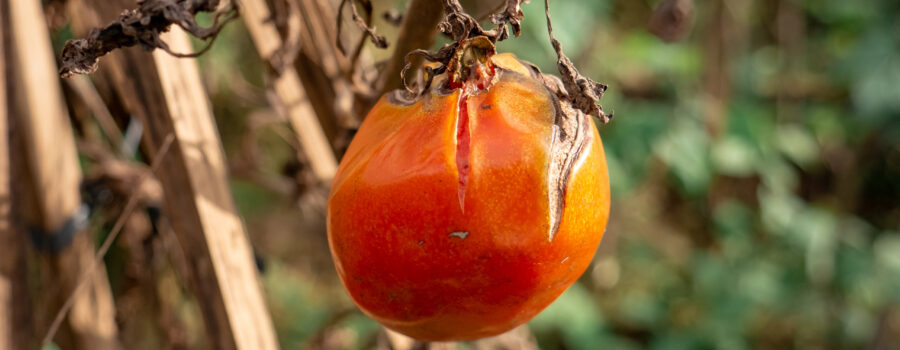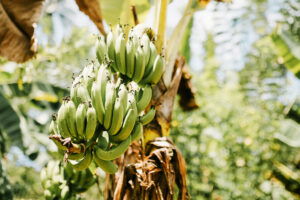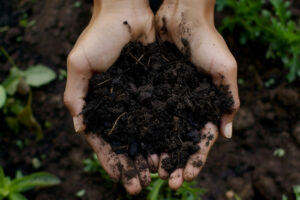Establishing a food forest is one of the most rewarding steps we can make toward creating a sustainable lifestyle, but the process will involve trial and error. Fortunately, many of the mistakes made in new food forests are preventable.
We all want to get our gardening projects up and going as soon as possible, but we also want to ensure the projects thrive right from the beginning. Here are some common mistakes that are helpful to be aware of, and hopefully you can avoid them up front.
1. Skipping Site Analysis
The Mistake: Many gardeners jump into planting without thoroughly understanding their site’s conditions — sunlight, soil type, drainage, wind patterns, and microclimates.
Why It Matters: Site-specific planning is foundational in permaculture. Planting trees, in particular, is an investment in the future, and not considering the best location or variety can lead to poor growth and wasted effort.
How to Avoid It:
- Spend time observing your site across all four seasons.
- Conduct a basic soil test (county extension offices are a great resource).
- Map sun/shade patterns and note water flow. (resource: suncalc.org)
- Identify microclimates (look for variations in sun exposure, water availability, wind, soil conditions).

2. Planting Without a Plan
The Mistake: In their enthusiasm, gardeners sometimes rush to buy a random selection of food forest plants and place them randomly without a plan. Even with a design, plans will change over time, but doing your research up front will save time and frustration in the long run.
Why It Matters: A haphazard layout can lead to overcrowding, competition for resources, missed opportunities for symbiotic relationships, and even plant failures.
How to Avoid It:
- Create a basic design that incorporates zones, layers, and guilds.
- Group plants by compatibility, water needs, and height.
- Use permaculture principles like stacking functions and diversity.
Over time, I’ve had to adapt and rethink some areas of my original design. Experimentation is a big part of the process. Each property is unique, and even within the property various microclimates affect how well a plant grows. Still, I am so thankful that I had a well-researched plan in place before I started. And, I hope this goes without saying, but only plant what you enjoy eating or using!
3. Ignoring the Importance of Layers
The Mistake: Planting only one or two types of layers — like fruit trees and groundcovers — while leaving out others like vines, shrubs, or root crops.
Why It Matters: Food forests rely on mimicking natural ecosystems, which are diverse and multi-layered. Ignoring layers means missing out on potential yields and ecological benefits.
How to Avoid It:
- Incorporate the seven classic food forest layers: canopy, understory, shrub, herbaceous, ground cover, vine, and root.
- Use companion planting and fruit tree guilds to fill in gaps.

4. Choosing Unsuitable Species
The Mistake: Selecting plants that aren’t adapted to your region’s climate or soil conditions. This is a big one, but avoidable with a little up-front research.
Why It Matters: Non-adapted plants often struggle, require excessive watering or care, and may never produce fruit. This one mistake can set a guild back years if the plant is a tree you’ve nurtured for years.
How to Avoid It:
- Prioritize native or well-adapted species.
- Consider drought-tolerant and pest-resistant varieties.
- Consult local permaculture groups or extension offices for advice.
That said, half the fun of gardening is experimentation and zone pushing. I love starfruit, but it doesn’t grow well in my area. Still, I stubbornly planted three starfruit trees in the very beginning. They did well at first, but they all died back after the first winter. Two came back from the roots (not the grafted part, but the actual root stock), one died. I have no idea what the rootstock is, but each year, these two bounce back. One actually seems to strengthen each year and it now just regrows branches from an established trunk. Time will tell if they will ever produce decent fruit. I’m willing to risk the space. You know your own patience and frustration levels, plant accordingly!
5. Overplanting Trees
The Mistake: Planting young trees too close together because they look small at first. Always check the mature size before planting. Even dwarf varieties can get quite large. And, you may be willing to keep on top of pruning, but it’s always a good idea to consider future generations or homeowners who may not.
Why It Matters: As trees mature, overcrowding can reduce air circulation, sunlight penetration, and access to nutrients, leading to disease and poor yields.
How to Avoid It:
- Research the mature size of each species.
- Use temporary short-term crops or nitrogen-fixers in the gaps between young trees.
- Consider long-term vs. short-term spacing needs.
I also always take my age into consideration. Now that I’m approaching my retirement years, I need to consider what I will be able to manage in the near future. My energy levels and ability to climb are changing.
6. Neglecting Soil Health
The Mistake: Failing to build or maintain healthy soil before and after planting.
Why It Matters: Poor soil leads to poor plant health, making trees more vulnerable to pests, disease, and drought.
How to Avoid It:
- Mulch heavily with organic matter.
- Use compost, biochar, and worm castings to enrich the soil.
- Plant dynamic accumulators like comfrey, yarrow, or pigeon pea to cycle nutrients.
7. Not Controlling Invasive Weeds Early
The Mistake: Allowing aggressive grasses or invasive species to establish themselves.
Why It Matters: Invasive plants compete with young food forest plants for light, nutrients, and water.
How to Avoid It:
- Sheet mulch aggressively before planting.
- Use dense ground covers to suppress weeds.
- Hand-pull invasive plants early before they spread.
We’ve all heard that “weeds are just plants in the wrong place.” While I agree with this, and always research volunteer plants before I yank them, some useful plants are also very difficult to manage. In my North Florida yard, I struggle with Bidens alba (also known as Beggarticks or Spanish Needle). While it’s a great pollinator attractor and also a medicinal plant, each plant can produce thousands of seeds that will latch onto your clothing and spread throughout the yard. And these plants grow large fast! I do allow some to grow here and there, but find myself frequently yanking volunteers all over the yard. Some plants need to be managed carefully!

8. Forgetting About Water Management
The Mistake: Not accounting for how water flows through the landscape.
Why It Matters: Poor drainage or lack of water-harvesting features can cause erosion, root rot, or drought stress.
How to Avoid It:
- Use swales, berms, or rain gardens to slow and capture water.
- Build soil organic matter to retain moisture.
- Harvest roof runoff into barrels or tanks when possible.
9. Lack of Patience
The Mistake: Expecting instant results or trying to “force” growth with excessive inputs or pruning.
Why It Matters: Food forests evolve slowly over time. Overmanagement can disrupt natural processes and increase labor.
How to Avoid It:
- Adopt a long-term mindset.
- Let the system develop organically with occasional guidance.
- Focus on observation and gentle intervention rather than control.

10. Ignoring Wildlife and Pollinators
The Mistake: Failing to attract or support beneficial insects, birds, and pollinators.
Why It Matters: They play an important role in pest control and plant reproduction.
How to Avoid It:
- Plant native wildflowers and nectar sources.
- Include water features like birdbaths (include piles of stones for bees to land on).
- Avoid synthetic pesticides and herbicides.
11. Poor Record Keeping and Observation
The Mistake: Not tracking what you planted, where, or how it performed.
Why It Matters: Without records, it’s difficult to learn from successes or mistakes, and you may forget what species are where.
How to Avoid It:
- Keep a garden journal or digital map.
- Note planting dates, yields, and observations.
- Take seasonal photos for reference.

12. Not Building Community or Seeking Help
The Mistake: Trying to do everything alone or without connecting to a support network.
Why It Matters: Community knowledge, resources, and support can make a huge difference in your success and enjoyment.
How to Avoid It:
- Join local permaculture or gardening groups.
- Attend workshops or farm tours.
- Share surplus, tools, and lessons with others.
Final Thoughts
Mistakes are part of the learning process, but you can significantly improve your chances of success by understanding these common pitfalls in advance. A successful food forest takes time, observation, and a willingness to work with nature, not against it.
By avoiding these errors, you’ll be well on your way to creating a vibrant, productive, and regenerative landscape that provides food, habitat, and beauty for years to come.
Copyright © 2025 Fruitful Food Forestry & Lauren Lynch. No portion of the original content on this website may be reproduced, in any language, without express written consent.
Express Your Food Forest Philosophy
Check out our fun products…









Leave a Reply
Your email is safe with us.